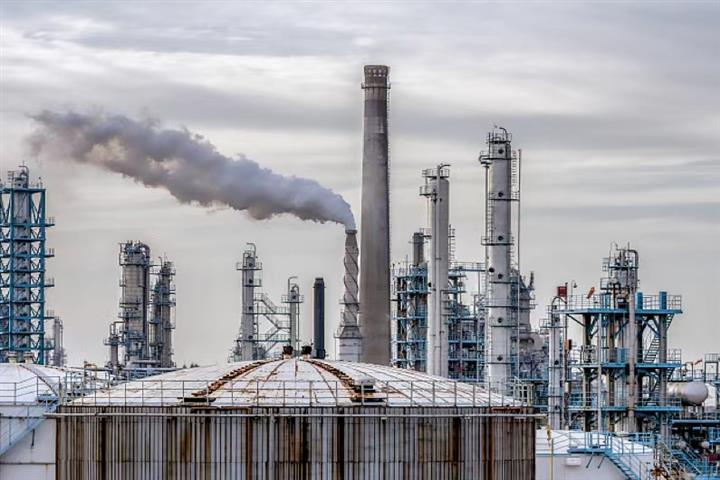 Shanghai's Petrochemical Industry Could Hit Peak Emissions Ahead of 2030 Deadline
Shanghai's Petrochemical Industry Could Hit Peak Emissions Ahead of 2030 Deadline(Yicai Global) July 29 -- Shanghai's petrochemical companies are tasked with reaching their peak carbon emissions as early as four years before the city's and the country’s target of 2030.
Petrochemical firms could start reducing their carbon dioxide emissions between 2026 and 2030, the eastern metropolis said in an action plan revealed yesterday.
Shanghai will accelerate the transformation of chemical industrial parks, it said. The city will promote resource recycling and improve the efficiency of gas by-products including refinery dry gas and liquefied petroleum gas. It will build industrial parks to make further use of CO2.
The economic hub is setting hard goals after President Xi Jinping said in 2020 that China aims to peak its CO2 emissions by 2030 and strives to achieve carbon neutrality by 2060.
The chemical industry is Shanghai's largest CO2 emitter, making up three-quarters of its industrial emissions, Zhu Yiran, senior project manager at the Shanghai Energy Conservation and Emission Reduction Center, said to Yicai Global. This is why it is important to control the chemical industry to achieve the peak of carbon emissions and the following carbon neutrality, Zhu added.
Cuts are already happening. Sinopec Shanghai Petrochemical, a leading company in the city's chemical industry, has reduced its coal consumption by 58,000 tons, petroleum coke consumption by 30,000 tons, and coke consumption by 12,000 tons in the first half of last year by optimizing its energy mix, Yicai Global learned from the firm located in Jinshan district.
Sinopec Shanghai is also cooperating with Petrochemical Iwatani Gas Development, which is a joint venture with Japan's Iwatani, to recover CO2 from ethylene glycol devices. The pair has formed a capacity of recycling 80,000 tons of carbon dioxide per year and producing food-grade CO2, it said.
Editors: Dou Shicong, Emmi Laine, Xiao Yi